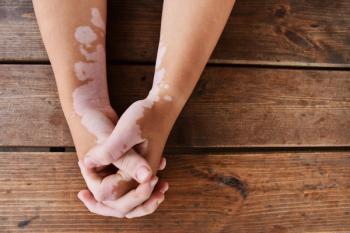
- Consultant for Pediatricians Vol 3 No 8
- Volume 3
- Issue 8
Two-Year-Old With Burned Hand
A 2-year-old boy was broughtto the emergency department(ED) with a burned hand.His mother reported that immediatelyafter the burn, sheplaced the injured hand undercold water. Soon after, a friendtransported the family to theED.
THE CASE: A 2-year-old boy was brought to the emergency department (ED) with a burned hand. His mother reported that immediately after the burn, she placed the injured hand under cold water. Soon after, a friend transported the family to the ED.
The mother reported that a rice cooker filled with hot water had been on the floor of the living room; her son had been running and tripped, which caused his hand and arm to be immersed in the cooker. This event was unwitnessed by the mother, who reported that a friend saw the event happen. The friend was not available for questioning at the hospital, however.
The child's medical history was significant for lack of a primary care provider. In addition, he did not have regular care and was behind on immunizations. At age 13 months, the child reportedly spilled hot oatmeal on his right leg. The resulting burns did not receive medical care.
Physical examination revealed a well-developed boy, with height, weight, and head circumference at the 50th percentile. A partial-thickness burn was present from the fingers of the left hand to the mid forearm. The burn was circumferential and involved all aspects of the left hand/forearm (Figure). The burn surface was weepy and moist. The border between burned and normal skin was sharp and distinct. Burn depth was fairly uniform throughout. There were no splash marks.
A healed extensive burn was present on the dorsum of the right hand. Also, the inner right ankle had an old burn with abundant keloid formation. There was no limitation of joint movement. The remainder of the physical examination was normal.
Was this burn the result of an accident, or was it intentional?(Answer and discussion on next page.)
DISCUSSION:This was judged to be a case of inflicted burn injury. The proportion of burns caused by abuse varies widely, based on the study characteristics. Between 4.3% and 28% of all burns reported in various studies were the result of abuse.1,2 Given their serious medical and psychosocial impact, inflicted burns must be identified.
At times, it can be difficult to distinguish between accidental and inflicted scald burns. Historical factors of the alleged injuring event that are inconsistent with the burn or with the age-appropriate developmental abilities of the child should raise the suspicion that the burn was inflicted. Unexplained delays in seeking care or other injuries, especially burns, may heighten concern about inflicted injury. Several burn characteristics can help differentiate between inflicted and accidental burns (Box).
CHILD PROTECTIVE SERVICES
When you suspect abuse, Child Protective Services (CPS) must be consulted. A thorough CPS scene investigation should be carried out in cases of suspected inflicted burns-as it was in this patient. Not only does this investigation fulfill the obligation of mandatory reporting, but multidisciplinary input often yields information that may increase or decrease suspicion of abuse. Only a thorough scene investigation will confirm or refute the history. The practitioner who either rules in or rules out inflicted burns without CPS involvement is not acting on complete information.
Besides reporting suspected abuse to CPS, clinicians can also help by obtaining and documenting clear histories and physical findings. Appropriate photographs should be obtained. Lastly, in children younger than 2 years, it is the author’s opinion that a skeletal survey should be obtained to rule out occult fracture.
References:
REFERENCES:
1.
Feldman KW, Schaller RT, Feldman JA, et al. Tap water scald burns in children.
Pediatrics.
1978;62:1-7.
2.
Hummel RP III, Greenhalgh DG, Barthel PP, et al. Outcome and socioeconomicaspects of suspected child abuse scald burns.
J Burn Care Rehabil.
1993;14:121-126.
3.
Jenny C. Cutaneous manifestations of child abuse. In: Reece RM, Ludwig S,eds.
Child Abuse: Medical Diagnosis and Management.
Philadelphia: LippincottWilliams & Wilkins; 2002:37-38.
Articles in this issue
over 15 years ago
Foreign BodiesNewsletter
Access practical, evidence-based guidance to support better care for our youngest patients. Join our email list for the latest clinical updates.









